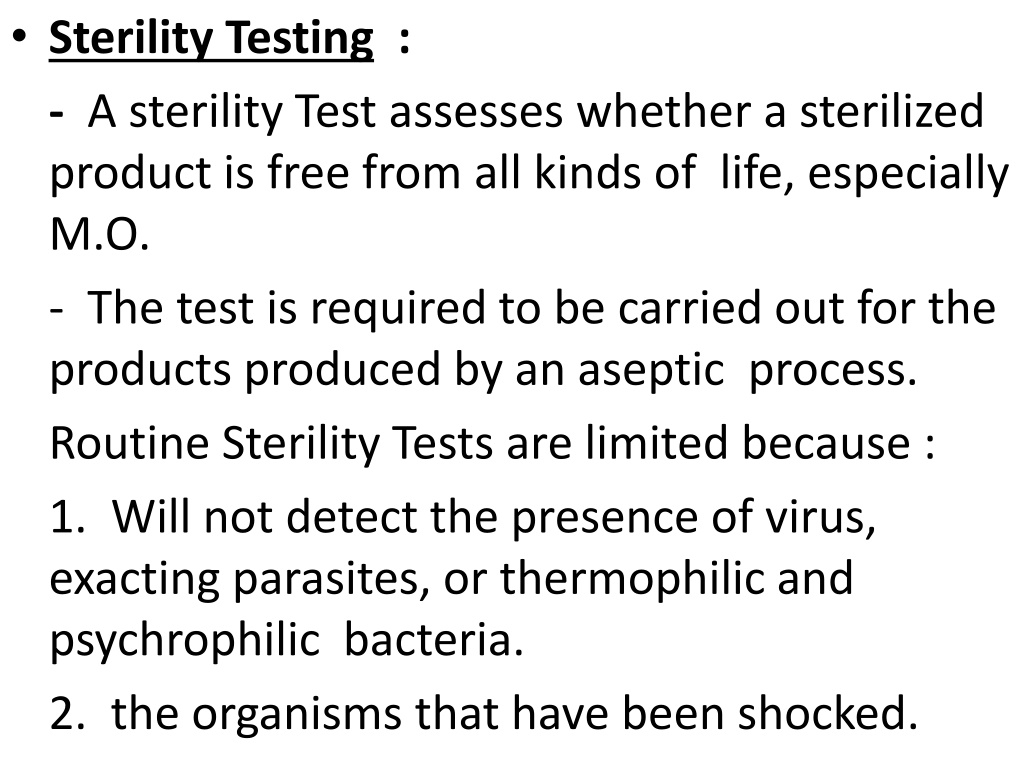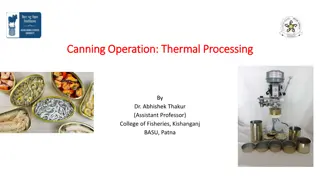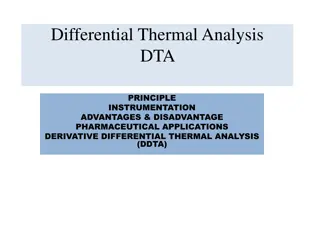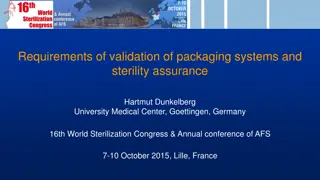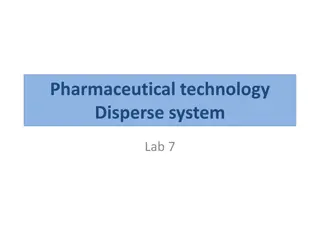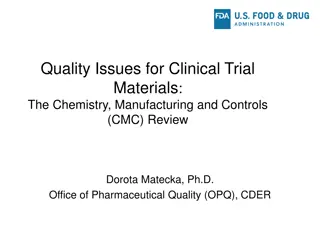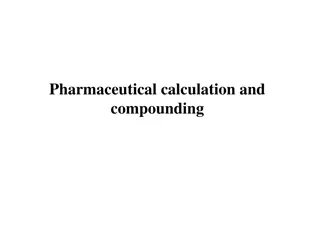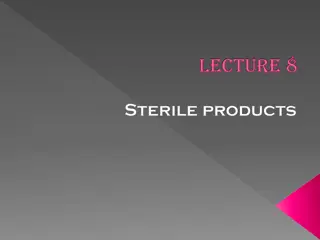Understanding Sterility Testing in Pharmaceutical Production
Sterility testing is crucial in assessing the absence of viable organisms in sterilized products. While it has limitations such as not detecting certain types of contaminants, various methods like direct inoculation, membrane filtration, and introduction of concentrated culture medium are employed to ensure product safety. This process is essential for products produced through aseptic processing to maintain quality in pharmaceutical manufacturing.
Download Presentation

Please find below an Image/Link to download the presentation.
The content on the website is provided AS IS for your information and personal use only. It may not be sold, licensed, or shared on other websites without obtaining consent from the author. Download presentation by click this link. If you encounter any issues during the download, it is possible that the publisher has removed the file from their server.
E N D
Presentation Transcript
Sterility Testing : - A sterility Test assesses whether a sterilized product is free from all kinds of life, especially M.O. - The test is required to be carried out for the products produced by an aseptic process. Routine Sterility Tests are limited because : 1. Will not detect the presence of virus, exacting parasites, or thermophilic and psychrophilic bacteria. 2. the organisms that have been shocked.
3. Bacterial spore having long germination period may not grow. 4. the test are conducted on randomly taken sample, hence low degree of contamination may be missed. - A sterility Test is intended to demonstrate that no viable organisms present. - To be certain, it would be necessary to use a universal culture medium suitable for the growth of any possible contaminant and to incubate at variety of conditions. - Sterility test detects relatively gross contamination in a final product.
Methods of Sterility Testing : 1. Direct Inoculation of Culture Media : Involve the introduction of test sample directly into nutrient media. - British Pharmacopoeia recommends two media : (i) Fluid mercapto acetate medium Contain glucose and mercapto acetate(Sodium thioglycollate), suitable for cultivation of anaerobic organisms (incubation temp. 30 c- 35 c).
(ii) Soybean Casein Digest Medium support the growth of both aerobic bacteria (incubation temp. 30 c-35 c) and fungi (incubation temp. 20 c-25 c). 2. Membrane Filtration : - Recommended by most pharmacopoeia and involves the filtration of fluid through a sterile membrane filter(pore size 0.45 m), m.o present will retained on the surface of filter. - After washing, the filter is divided aseptically and portions transferred to a suitable media, are incubated at appropriate temp. for a suitable period of time.
- Water soluble solids can be dissolved in suitable diluents and processed in a same way. - Advantages of this method is (i) Entire sample can pass through the membrane and (ii) all inhibitory constituents of the products are removed. 3. Introduction of Concentrated Culture medium : This is a sensitive method for detecting low
level of contamination in intravenous infusion fluids. - Addition of concentrated culture medium of the fluid in its original container, so that the resultant mixture is equivalent to single strength medium and sampling of the entire volume is achieved. 4. Antimicrobial Agents : A product comprises any antimicrobial agent e.g. Preservative, its activity must be nullified during sterility testing.
This can be achieved by following methods : (i) Specific Inhibitors : - An appropriate inactivating(neutralizing) agent is incorporated in to the culture media. - inactivating agent must be nontoxic to m.o. e.g Phenols, Cresols, Antibiotics, Alcohols etc. (ii) Dilution : - The antimicrobial agents such as alcohol, phenols are diluted in a culture medium to a level at which it ceases to have any activity.
(iii) Membrane Filtration Technique : - Method is used to overcome the activity of antibiotics. - A solution of the product is filtered through a hydrophobic membrane filter, which will retain any contaminating m.o. - Membrane is washed to remove traces of antibiotic adhering to the membrane and then transferred to appropriate culture media.
Sterility Testing By Direct Inoculation Method Requirements : 1. 4 - tubes of soybean casein digest broth(2- positive , 1- negative control, 1- test.) - Soybean casein digest broth supports the growth of both bacteria & fungi. 2. 3- tubes of Robertson Cooked Meat (RCM) medium/Thioglycollate broth supports the growth of anaerobes. 3. S.aureus, Clostridium sporogens, A.niger for inoculation in to positive control tubes.
Procedures : 1. Neutralize the bactericidal ingredient of the product to be tested. 2. Label the different tubes and inoculate them as follows : - Soybean casein digest broth as Positive control for aerobic bacteria(inoculate with 0.1 ml (10 cells/ml) S. aureus and 0.5 ml of the product) and for fungi (inoculate with 0.1 ml (10 cells/ml) A. niger and 0.5 ml of the product).
- RCM/Thioglycollate broth as positive control for anaerobic bacteria(inoculate with 0.1 ml (10 cells/ml) Clostridium sporogens and 0.5 ml of the product). - 1- each tube of Soybean casein digest broth and RCM/Thioglycollate broth as test and inoculate with 0.5 ml of the product. - 1- each tube of Soybean casein digest broth and RCM/Thioglycollate broth as Negative control and is left uninoculated. 3. Incubate all tubes as follows : For bacteria at 30-37 C for 3-7 days and
for fungi at 20-25 C for 7 days. 4. Examine all tubes at regular intervals for growth and turbidity in test. 5. If growth appears perform Grams staining for bacteria and mount the fungi in lacto - phenol blue . 6. Draw results and conclusion for the sterility of the product.
Importance of Positive and Negative Controls : - Required to show that the m.o will grow under the test condition. - Positive control ability of small numbers of suitable m.o to grow in presence of the sample is assessed. - Negative control helps in assuring the sterility of the medium.
